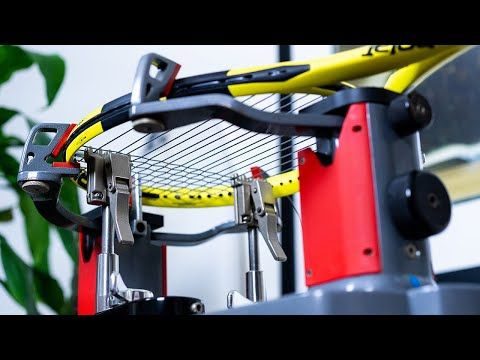How Long to String a Tennis Racket?
Stringing a tennis racket can vary in time based on your experience and the type of racket you’re working with. On average, it takes around 15 to 30 minutes to string a tennis racket for someone who is familiar with the process. However, if you’re new to stringing or using specialized equipment, it might take closer to 30 to 45 minutes.
Factors that can affect the time it takes to string a racket include:
- Experience: If you’ve done it before and have some practice, you’ll likely be faster than a beginner.
- Type of Racket: Different rackets have varying patterns and designs, which can affect the complexity of stringing.
- Stringing Method: Some stringers use manual machines, while others use electronic machines. Electronic machines tend to be faster.
- Tension: If you need to adjust the tension of the strings, it might take a bit more time to ensure accuracy.
- String Type: Certain strings are easier to work with than others, affecting the overall time.
- Knotting and Finishing: Properly knotting and finishing the strings is important for playability and safety, but it can also add a bit of time to the process.
Remember, as you gain experience, you’ll likely become faster and more efficient at stringing rackets. If you’re doing it for the first time, give yourself a bit of extra time to ensure you’re doing it correctly. Discover about Parts of a Tennis Racket
Understanding String Tension
The Role of String Tension
String tension directly affects how the ball interacts with the racket’s strings. Higher tension typically offers better control and precision, but it might sacrifice power. Conversely, lower tension can provide more power and comfort, sacrificing some control. Finding the right balance is essential.
Also read the Article: How Much Does a Tennis Restring Cost

Factors Influencing String Tension
String material, racket head size, and player preference all influence the ideal string tension. Modern rackets often have recommended tension ranges printed on them. Consulting these recommendations is a good starting point.
The Stringing Process Step by Step
Step 1: Gather Your Tools
Before diving into the stringing process, ensure you have all the necessary tools. You’ll need a stringing machine, appropriate strings, a tension gauge, and pliers.
Step 2: Remove the Old Strings
Use your pliers to carefully remove the old strings. Pay attention to the pattern in which they were strung; this will be important when installing the new strings.
Step 3: Mount the Racket
Secure your racket to the stringing machine’s mounting points. Make sure the racket is stable and won’t move during the stringing process.
Step 4: Stringing the Main Strings
Begin by stringing the main strings (vertical strings) according to your preferred tension. Use the stringing machine to achieve the desired tension level.

Step 5: Stringing the Cross Strings
After completing the main strings, move on to the cross strings (horizontal strings). Weave the strings over and under the main strings, creating a uniform pattern.
Step 6: Achieving the Right Tension
Use a tension gauge to measure the tension of both the main and cross strings. Adjust as needed to ensure consistency across all strings.
Step 7: Tie Off the Strings
Secure the strings at the end of the racket once all are in place. Use appropriate knots to prevent the strings from unraveling.
Factors to Consider
Playing Style
Your playing style influences the string tension you should opt for. Aggressive players might prefer higher tension for control, while defensive players might lean toward lower tension for power.
String Material
Strings come in various materials, each offering unique characteristics. Natural gut provides comfort and power, while polyester strings offer durability and control. Consider your playing style and needs when choosing the right material.
Frequency of Play
Frequent players might need to restring their rackets more often due to increased wear and tension loss. Casual players may restring less frequently.
Conclusion
Stringing a tennis racket is a crucial yet often overlooked aspect of optimizing your gameplay. By understanding the role of string tension, following the proper stringing process, and considering personal factors, you can ensure your racket performs at its best on the court.
FAQs
Q. Is higher string tension always better for control?
A. Not necessarily. While higher tension offers more control, it might sacrifice power. Finding the right tension for your playing style is key.
Q. Can I string my racket without a stringing machine?
A. Using a stringing machine is recommended for consistent tension and accurate stringing. Hand-stringing can be challenging to get right.
Q. How often should I restring my tennis racket?
A. It depends on how frequently you play. Regular players might restring every few months, while occasional players can stretch it to once a year.
Q. Can I use the same tension for all types of strings?
A. Different string materials and patterns might require adjustments in tension. Refer to manufacturer recommendations for best results.
Q. What happens if I exceed the recommended string tension?
A. Excessive tension can lead to decreased playability and potential damage to your racket. Stick within the recommended range for optimal performance.











